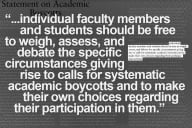You have /5 articles left.
Sign up for a free account or log in.

Wangkun Jia/iStock/Getty Images
The Massachusetts Institute of Technology Admissions Office recently released the profile for its incoming Class of 2028. The announcement garnered national coverage in publications including The New York Times, seen as a first glimpse into how summer 2023’s Supreme Court decision on race-conscious admission has impacted diversity at elite colleges and universities.
The headline emanating from the profile release was that Black and Latino enrollment at MIT has dropped precipitously in the wake of the Supreme Court decision in the cases filed by Students for Fair Admissions against Harvard University and University of North Carolina at Chapel Hill. Whereas the combined percentage of Black, Latino and Native American and Pacific Islander students had in recent years accounted for a quarter of MIT’s entering classes, the percentage dropped to 16 percent for the Class of 2028. The percentage of Black students in the entering class dropped from 15 percent to 5 percent, and Latino students from 16 percent to 11 percent. The percentage of Asian American students increased from 40 percent to 47 percent, while the percentage of white students remained steady (37 percent compared with 38 percent a year ago).
So MIT finds itself in a situation where, just one year after the Class of 2027 had the highest proportion of students from historically underrepresented racial and ethnic backgrounds in the institution’s history, the Class of 2028 has the lowest proportion in decades.
And since MIT released its freshman profile, two other highly selective institutions, Amherst College and Tufts University, have released data showing similar declines in the proportion of first-year students who are students of color.
Should we be surprised by these declines? And what’s the explanation?
The declines in diversity are anything but surprising. MIT’s experience mirrors what happened at public universities in states like California and Michigan after race-based affirmative action was outlawed in those states.
The materials posted by MIT in connection with the class profile included a detailed blog post written by longtime dean of admissions Stu Schmill. I appreciate his taking time to try to lay out the issues, and both MIT’s institutional commitment to diversity and his personal passion come across clearly. I subsequently reached out to him with several questions, and he responded promptly and thoughtfully.
Schmill’s blog post asserts that the diversity decline is solely explained by the impact of the Supreme Court decision. That is an obvious conclusion. In philosophy there is a principle known as Occam’s razor, named for the 14th-century philosopher William of Occam (or Ockham). Occam’s razor argues that the best explanation is usually that which is simplest.
Then again, Occam never watched police procedurals or suspense movies with surprise twists and endings. In this case, there are a couple of factors besides the Supreme Court ruling that could be impacting the MIT decline.
One of the unknowns is whether the applicant pool this year looked substantially different from that of previous years. The New York Times reported that MIT does not know whether fewer Black and Latino students applied this year, because it didn’t ask applicants about their race. MIT is certainly not unique in that approach, as collecting that information would have opened colleges to charges that they were continuing their efforts to craft a class with a certain look despite the court prohibition on doing so.
But there is another issue that is glossed over in the MIT materials that deserves scrutiny. Two years ago, MIT returned to requiring applicants to submit standardized test scores, a move that has been followed this spring by other highly selective universities. A common theme in their announcements has been the argument that internal institutional research proves that standardized test scores serve as an aid to achieving diversity, but if there is clear evidence supporting that, I’ve missed it.
A footnote in Schmill’s blog post states that the reinstatement of the testing requirement played no role in MIT’s decline in diversity. But compared with all the rich discussion about diversity, there is little detail about how the reinstitution of the test requirement impacted the admission process, other than the assertion that it “helped us identify objectively well-qualified students who lacked other opportunities to demonstrate their preparation,” resulting in the university admitting its most racially and ethnically diverse class ever last year, the first year of the return of testing.
That may serve as prima facie evidence that the reinstatement of required testing did not contribute to this year’s decline, but it’s not that simple. The weight and influence of test scores in a holistic admission review without the ability to consider factors such as race and ethnicity is far more pronounced—and more dangerous.
Interpreting test scores requires context. As an admission officer, I may have more confidence in a student with a 1500 SAT than one with a 1300, but it makes a difference if the higher score reflects multiple times taking the test or thousands of dollars in test prep. That doesn’t even begin to get into inequalities in family income and high school quality. Without that context, it is easy to assign test scores a false precision and see them as some sort of objective measure of ability.
There are also some broader philosophical questions about the role of test scores. Are test scores a tool of identification (who belongs in the pool) or a tool for selection? Should they be used to identify who is qualified or who is more qualified? Is a student with a 1530 SAT a better, more deserving candidate than one with a 1470, and is a student with a projected GPA of 3.9 more deserving than one with a projected 3.3?
There are two other things in the MIT materials that caught my attention. In another blog footnote, Schmill states that “we cannot reliably predict academic success at MIT without relying on standardized testing.” I wondered about that. How did MIT predict academic success during the years when it was test optional? Was there less academic success during that period? In his email response to that question, Schmill observed that for the two years MIT suspended its testing requirement, it only admitted students without SAT or ACT scores “who were able to demonstrate their talent in different ways,” such as their performance in Advanced Placement or International Baccalaureate courses. I wonder how the more liberal scoring of AP exams and the changes in format for the SAT and ACT would impact that.
In a different footnote, Schmill points out that none of the quantitative measures used by MIT predict any difference in academic outcomes between the Classes of 2027 and 2028, but states that there may be “qualitative” differences. I asked him what those qualitative differences might be, and he answered that the decline in diversity numbers presents not just a quantitative difference for an institution like MIT, but a qualitative difference.
I am grateful to MIT for publishing the blog post. The interplay between testing and diversity is mysterious and controversial, and it’s an important conversation for both our profession and our society. I’m also sensitive that dealing with these issues is far more complicated when you are charged with helping an institution like MIT achieve a complex number of institutional imperatives.
The ultimate question is how we should feel about the decline. Is the change in the diversity numbers a good thing? That is a much harder question to answer. Not surprisingly, Edward Blum from SFFA sees the change as a positive course correction to the policies that led to the lawsuits in the first place. But for many of us, an elite admissions process that produces substantially less diversity seems neither “fairer” nor in the nation’s best interest.








